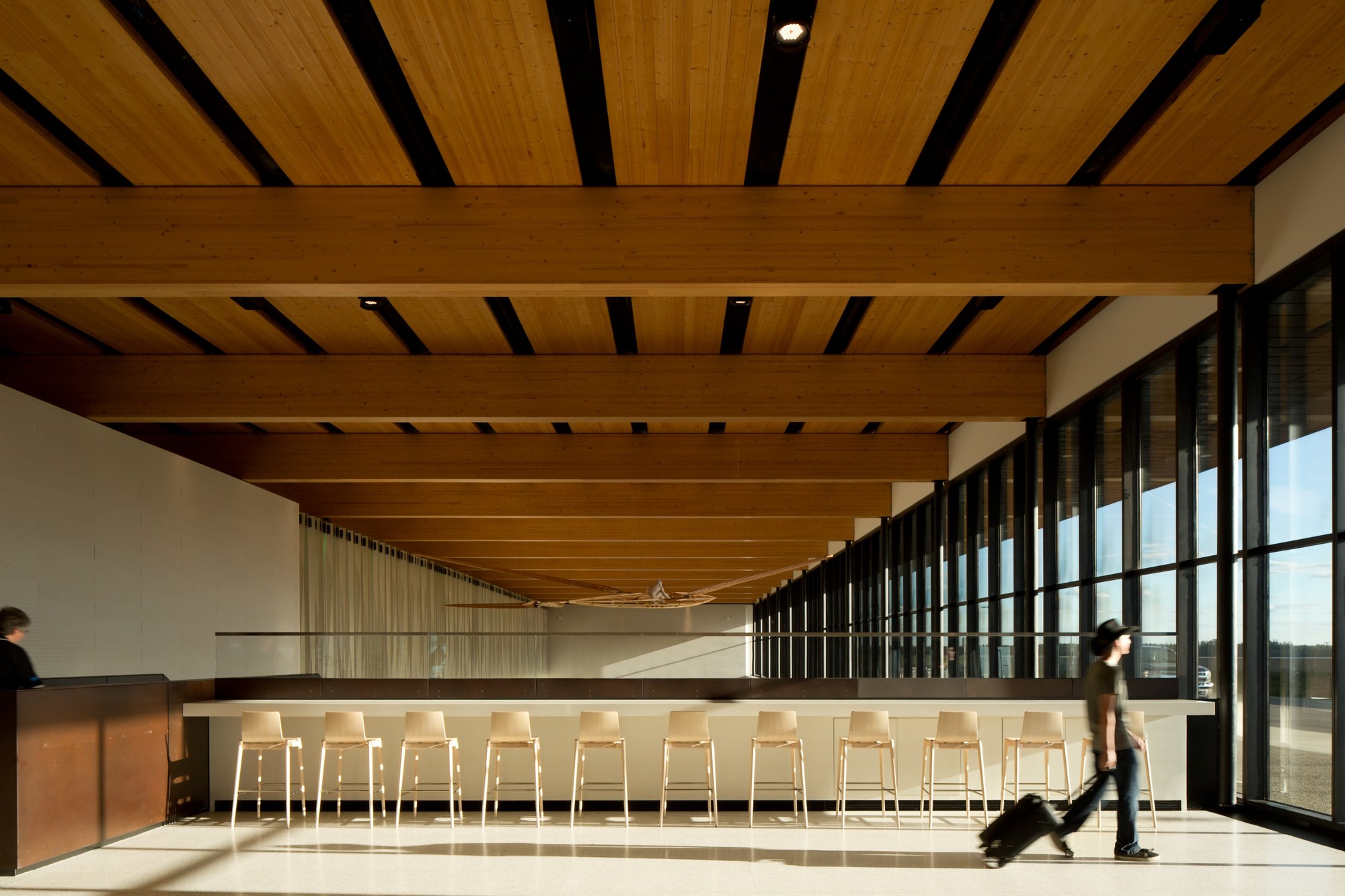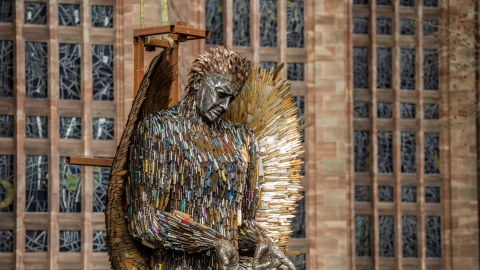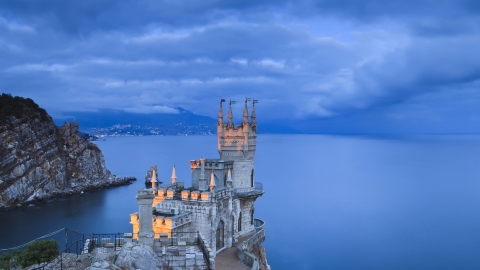Making airport spaces more comfortable and pleasant is a challenge, due to the large scale that these types of buildings often face. Therefore, choices in materials, furniture and lighting can completely change the atmosphere in these spaces. Here are some projects that use these choices strategically and creatively to create an enjoyable atmosphere and enhance the flying experience for passengers.
Beijing Daxing International Airport in China
Design: Zaha Hadid Architects
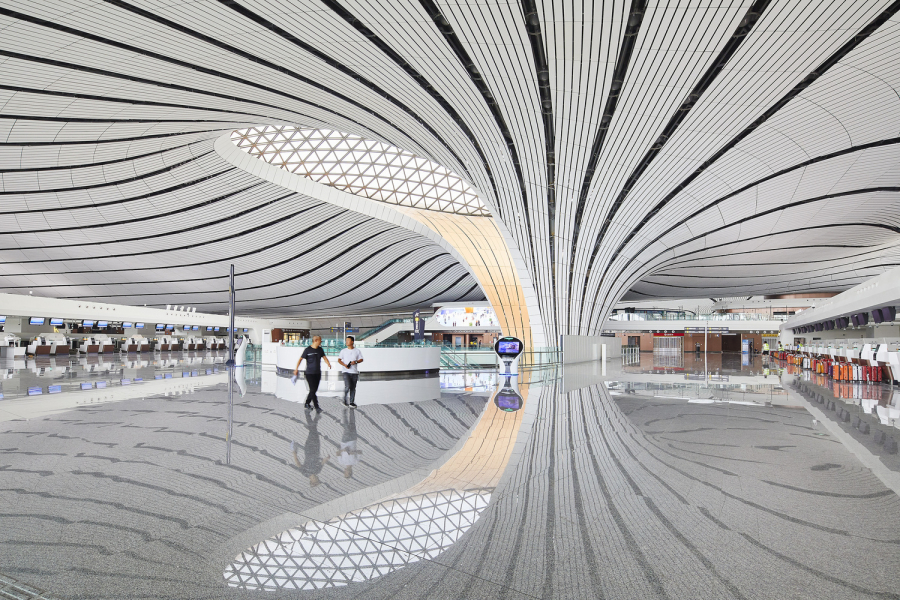

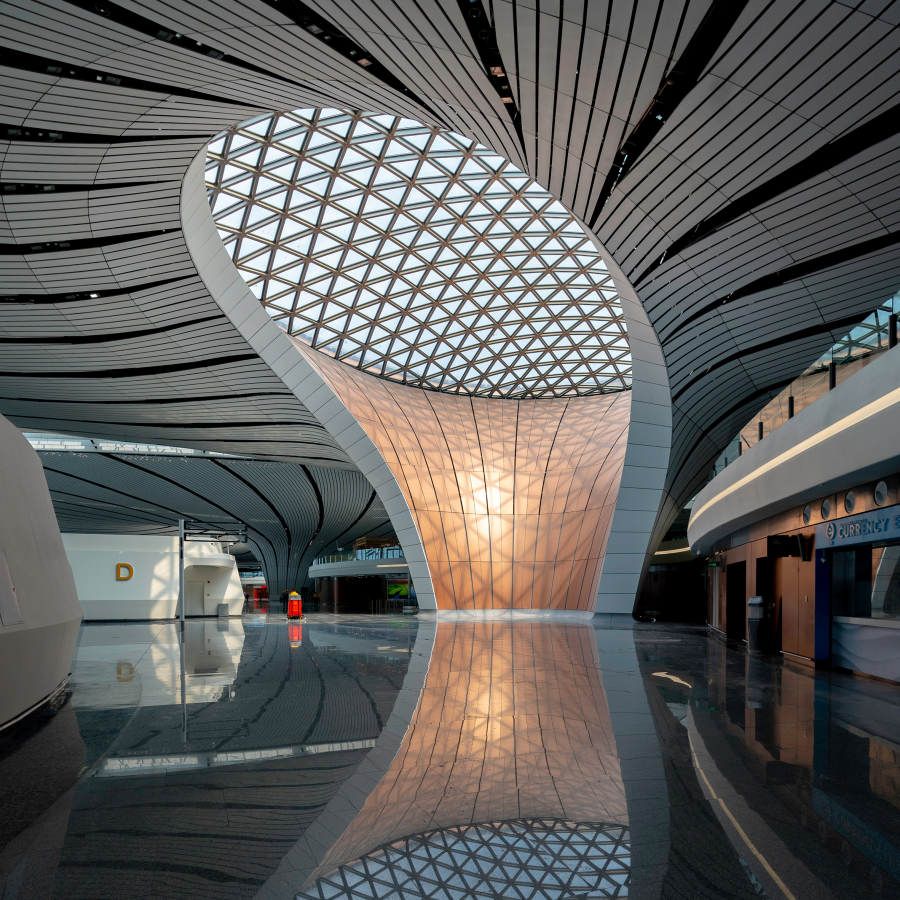
Built to ease congestion at the capital’s existing airport in Beijing, Beijing Daxing International Airport is a large-scale project with a 700,000 m² passenger terminal. In terms of organization, the project’s plan is designed according to principles that echo traditional Chinese architecture: a central courtyard connects and links all spaces together. The design of the ceiling as well as the skylights and vertical windows ensure natural daylight, creating an interesting spatial effect.
Hamad International Airport in Qatar
Design: HOK
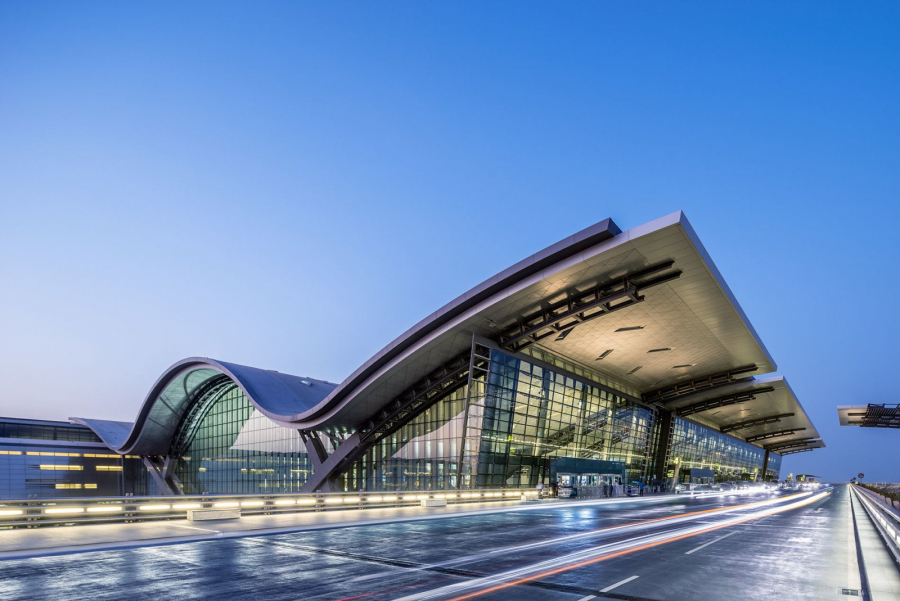


Designed to evoke the waves and sand dunes revered by the area, the Hamad International Airport Passenger Terminal Complex in Qatar uses a ludic reference to create the interior space. This not only makes the transit experience more pleasant, but also optimizes the building’s flows and functions as they operate, guiding the paths and routes that users must follow. The wave-like shape of the roof matches the relationship between light ingress and ceiling height.
“Passengers arriving at the airport experience a light-filled, undulating super-roof. The steel-framed glass curtain wall provides unobstructed views, making it easy for passengers to find their destination. The longer east and west facades feature similar high-performance glass to control heat gain and solar glare. Moving through immigration, departing and transfer passengers will be on the first floor, where a skylight provides direct views to one of the five concourses,” the project team said.
Jewel Changi Airport in Singapore
Design: Safdie Architects
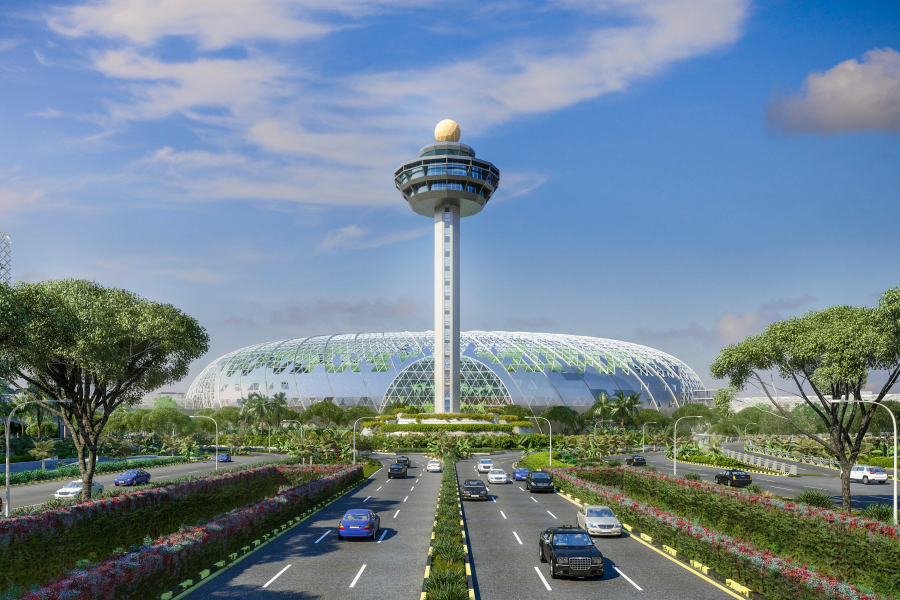
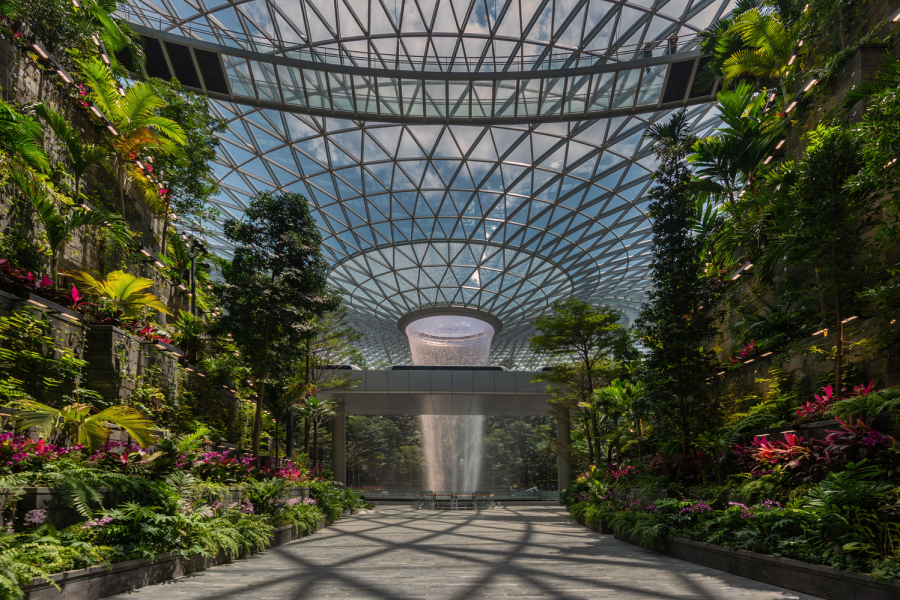
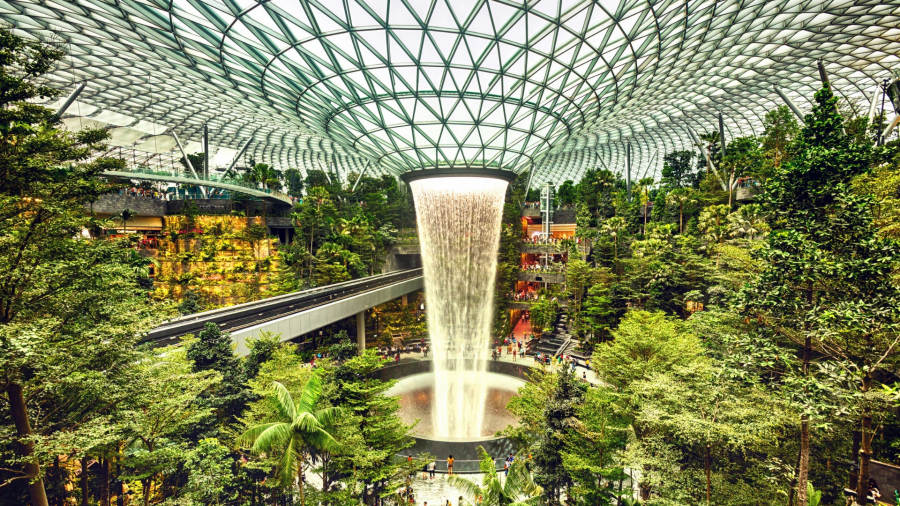
This mixed-use development was built to serve as a link between the two existing terminals, while also providing space for a market and an indoor garden at Changi Airport. It is a prominent example of the use of plants in airport spaces. The 135,700 m² complex features a diverse mix of land airport facilities, hotels, shopping malls and restaurants, allowing for open spaces.
The design of the indoor garden offers a wonderful experience for transit passengers, who can enjoy walking trails, multi-tiered waterfalls, gardens and witness the world's tallest indoor waterfall. The use of 200 species of plants enriches the surrounding space and allows the indoor space to take advantage of the features of the outdoor space.
Heydar Aliyev International Airport in Baku, Azerbaijan
Design: Autoban



Located in Baku, the capital of Azerbaijan, the new terminal of the local airport features a striking spatial design. According to the project description, the idea was to overturn the usual logic of the airport as a space of impersonal and isolated experiences. Thus, wooden 'pods' were created that span the entire passenger space of the terminal. These facilities provide a cozy space for passengers, while also providing the opportunity to meet people thanks to the unconventional airport furniture design, mainly related to the choice of materials. The use of wood, stone and textiles, along with a carefully considered lighting system, makes the space warm, comfortable and people feel more connected.
Kurumoch International Airport and VIP Lounge in Russia
Design: Nefa Architects
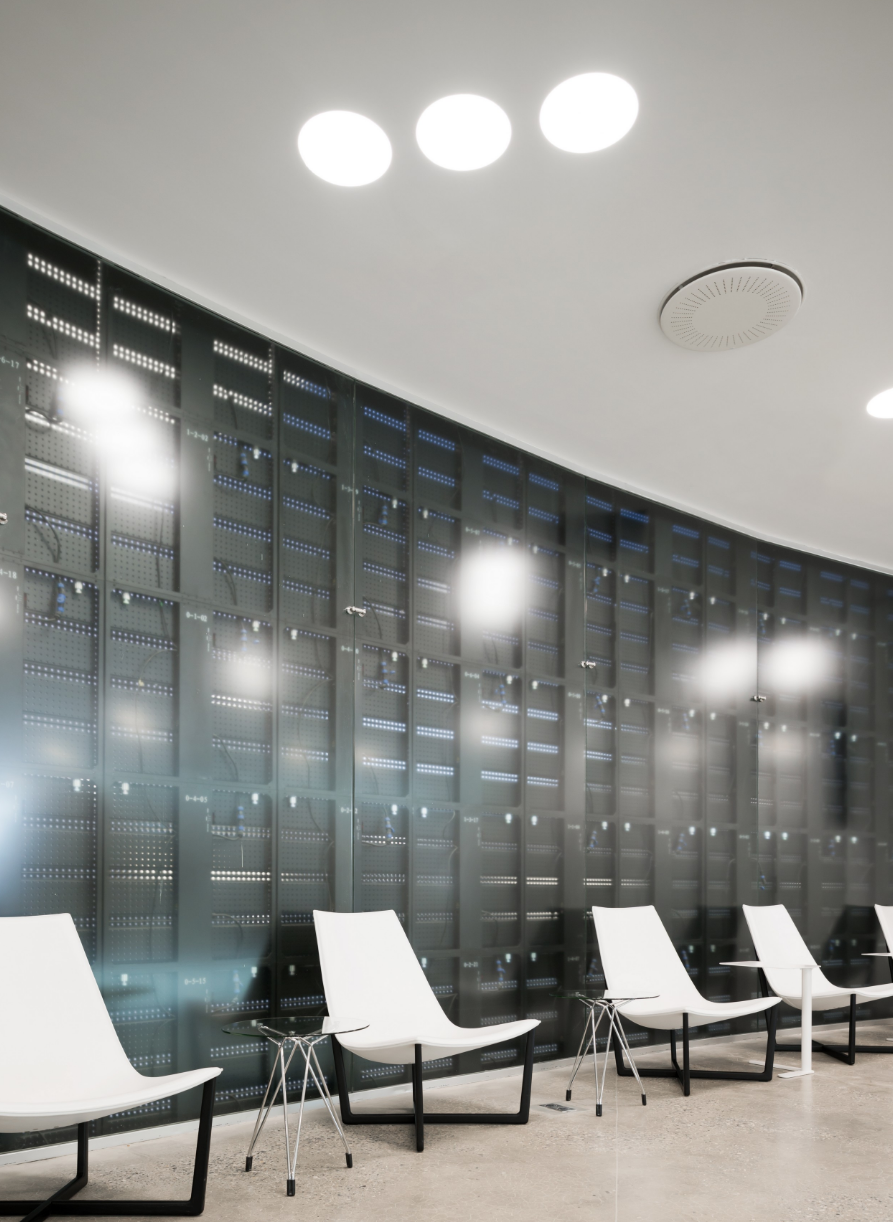
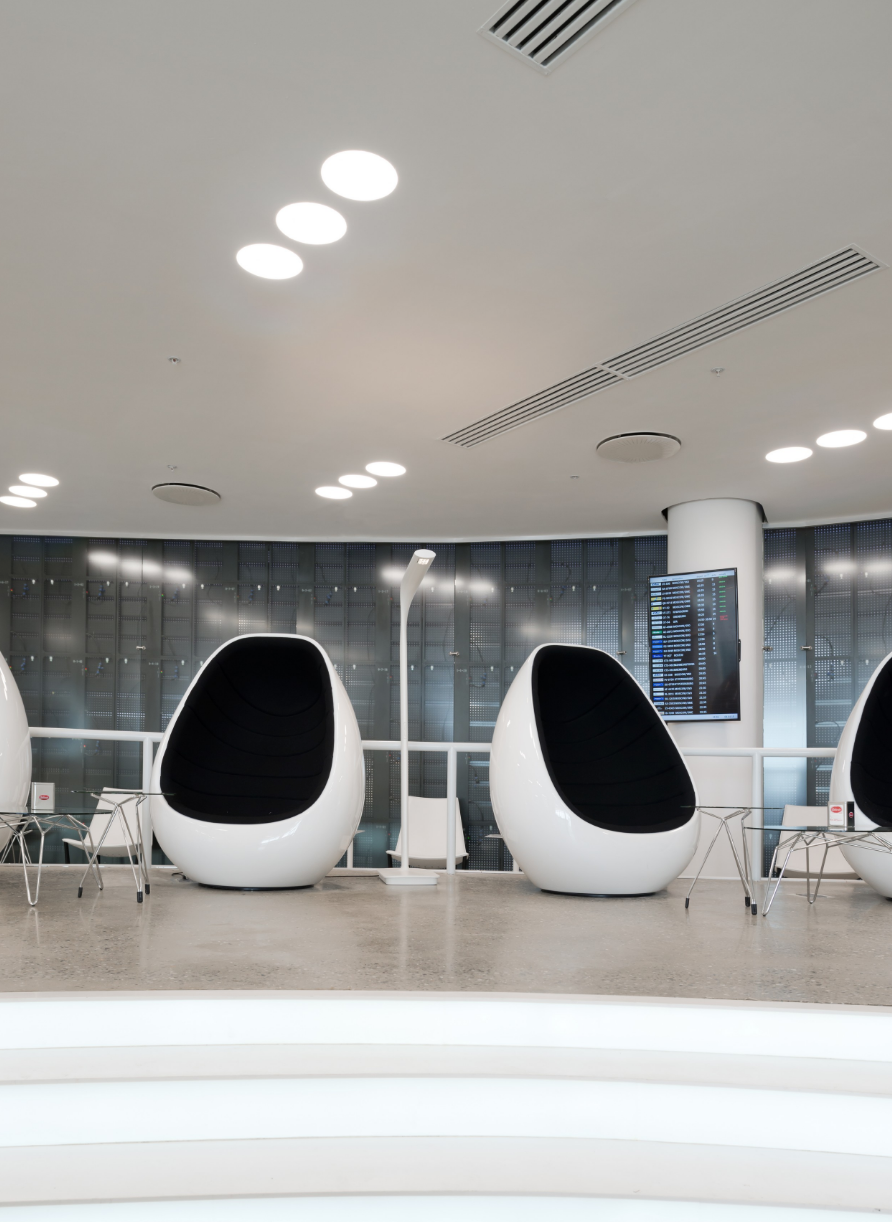

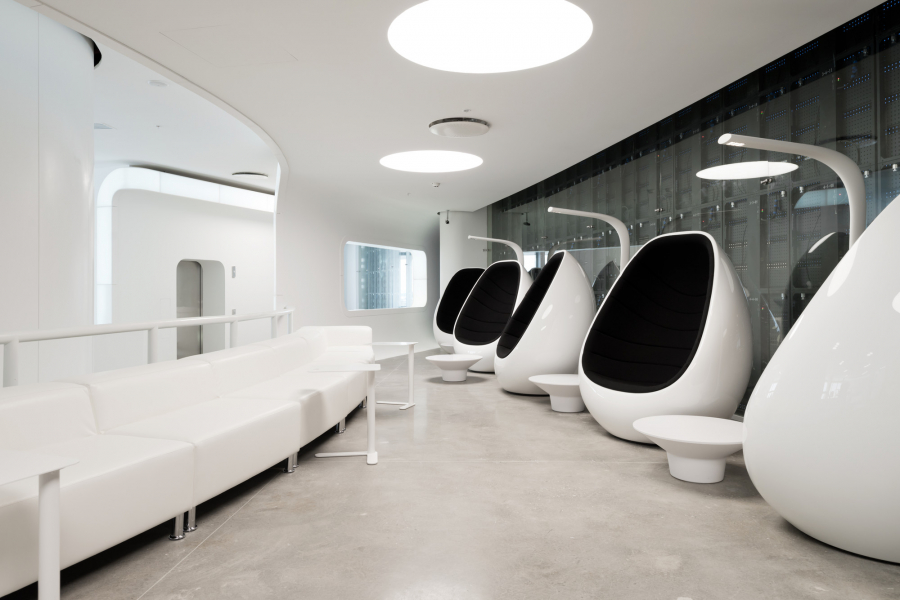
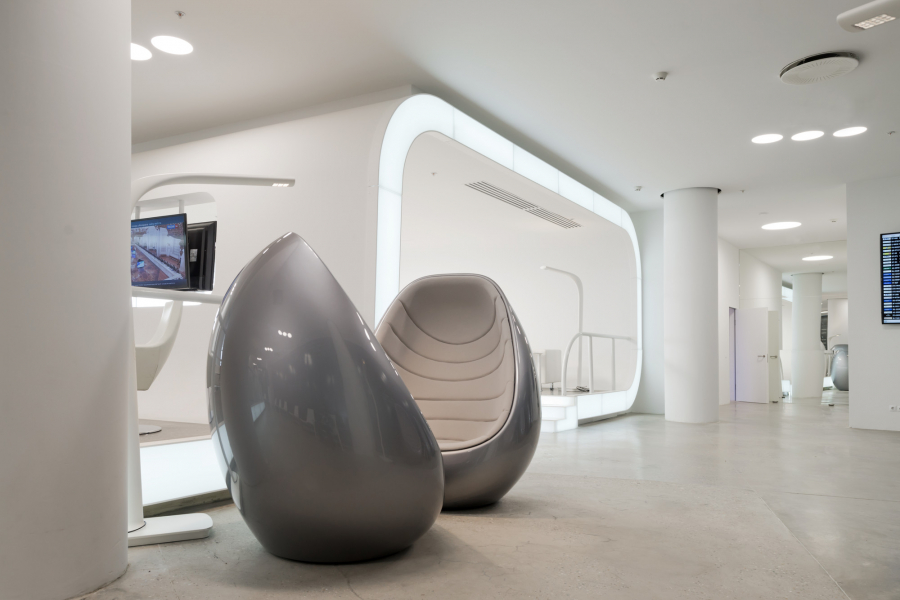
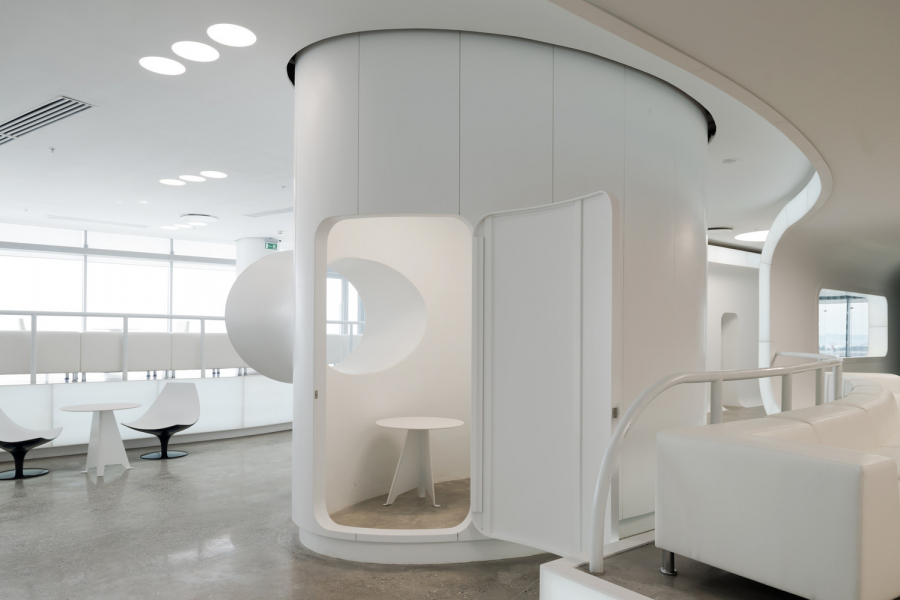
Kurumoch International Airport is the largest and most promising airport in the Volga region and is among the top 10 airports in Russia. The airport is connected by airlines from almost all regions of the Russian Federation, neighboring countries and abroad.
The new international terminal’s spatial focus is entirely on Samara’s spatial connection to the largest remaining Soviet-era rocket factory. It is an architectural block with soaring business lounges under domes in the airport’s open space and a giant media screen outside. Once inside, passengers can see the reverse side of the structure with wires and light bulbs shining as if they were on a spaceship.
The space recreates the aesthetics of the 1960s space age. There is everything to make you feel like you are the hero of an aerospace movie: a mobile smoking cabin with a view of the airport and tubes for serving meals. Soundtracks from famous movies such as “Solaris” and “Star Wars” are played here. Moreover, if someone moves closer to the glass facade, you can hear the sound of the plane taking off, which can increase the feeling of being in outer space.
Fort Mcmurray International Airport in Canada
Design: Office Of Mcfarlane Biggar Architects + Designers Inc.

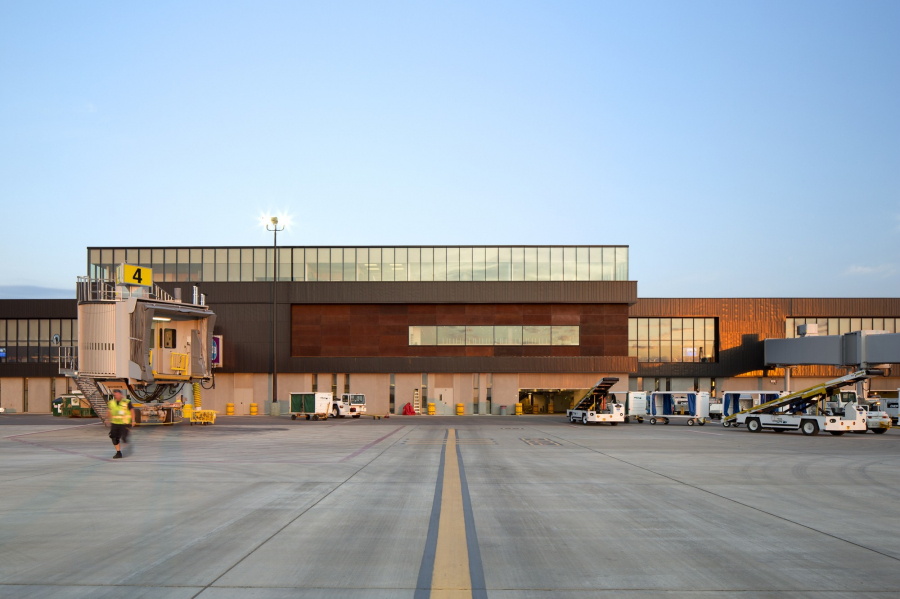
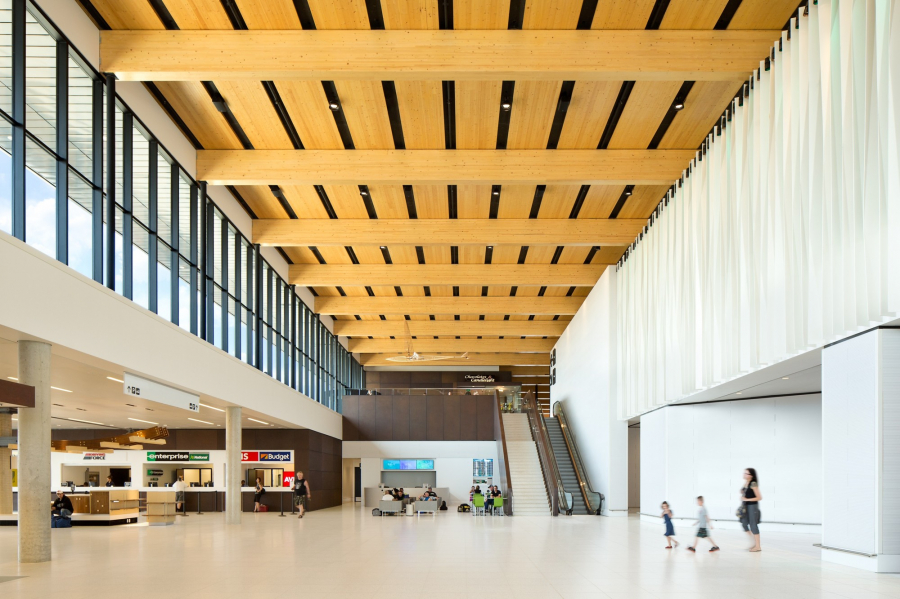
The connection of the building to the local context is an important part of this project, aiming to make the project a reference for the community with its ever-evolving cultural identity. The treatment of the indoor spaces involves local materials and labor, coupled with the desire to introduce effective green building measures, enhancing the in-flight experience for passengers.
The new Fort McMurray International Airport creates a meaningful and relevant gateway for visitors and residents of the Wood Buffalo area of Northern Alberta. Aesthetically, the overall goal of the project is to create an iconic and memorable presence in the landscape as well as a direct, harmonious expression of the spirit of the place.






